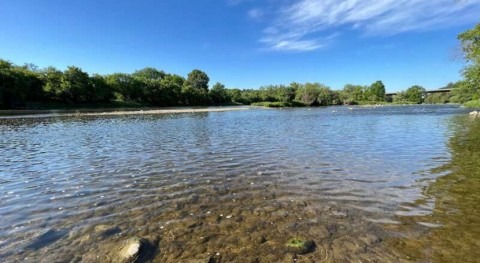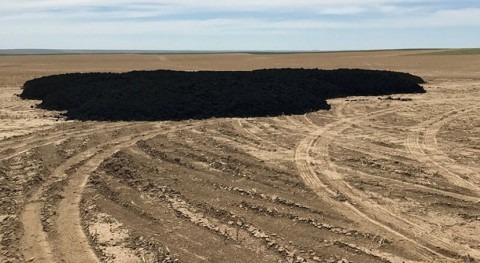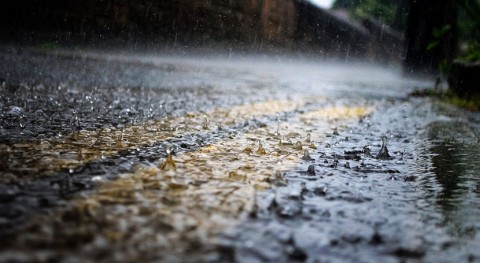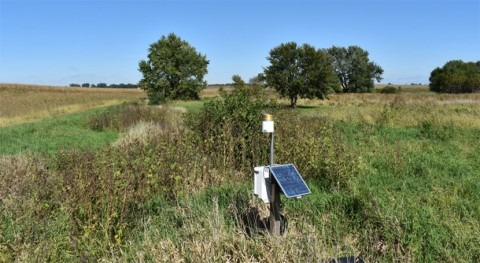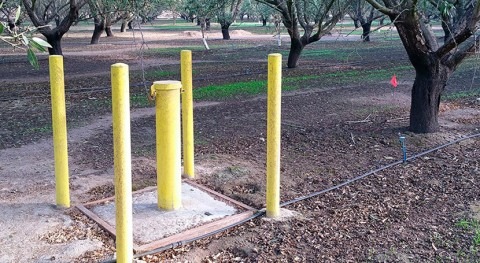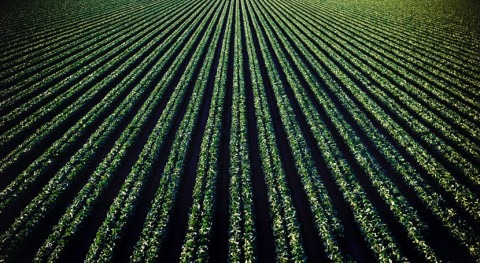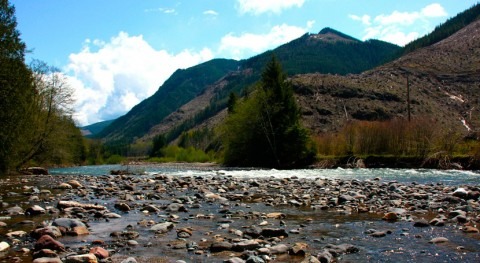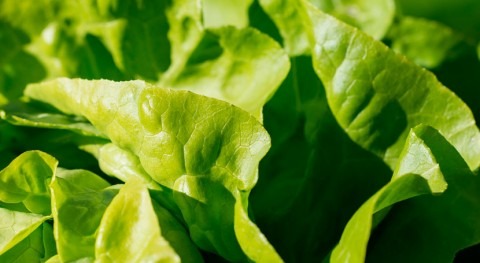Crops need nutrients like nitrogen and phosphorus to grow and thrive. However, excess nutrients from farms can wash into streams and rivers, and even make their way into oceans. The surplus in nutrients can cause major damage to aquatic ecosystems; but small wetlands can be of tremendous help in reducing or preventing this damage.
In a new study, researchers have shown that wetlands built next to farmlands can dramatically reduce the amount of excess nutrients reaching aquatic environments.
The study was recently published in the Journal of Environmental Quality, a publication of the American Society of Agronomy, Crop Science Society of America, and Soil Science Society of America.
"Even very small wetlands can be effective," says Maria Lemke, lead researcher of the study at The Nature Conservancy.
The study was conducted over 12 years on a 272-acre farm in McLean County in central Illinois. Many farms in this part of the United States use tile drainage systems—a network of interconnected underground pipes that drain water from the farms.
"Our findings show that constructed wetlands can be very effective at reducing excess nitrogen losses from agricultural tile systems," says Lemke. "We also show that these wetlands can capture dissolved phosphorus efficiently."
Lemke and colleagues showed that wetlands as small as 3% of the tiled area draining into them can be effective. These wetlands catch excess nutrients draining from surrounding farmlands. This means less nutrients end up in streams and rivers, and ultimately, the ocean.
Nitrogen and phosphorus are vital nutrients for all life on Earth. These elements are part of the essential building blocks of life, including DNA and proteins. But when too much nitrogen and phosphorus make it into aquatic systems, they can fuel massive growth of organisms like algae or cyanobacteria that ultimately reduce much of the oxygen in marine systems. That can force other organisms—like fish or shrimp—to move away or even die, creating "dead zones."
Even the smallest wetlands reduced nitrogen loss from farm tiles by 15 to 38%
Nutrient losses to the environment can come from many different sources. In the agricultural Midwest, excess nutrients drain into the Mississippi River system. These nutrients travel through the river system and eventually end up in the Gulf of Mexico, which is the site of the world's second largest "dead zone."
Constructed wetlands can be a useful conservation practice that mitigates nutrient export from farms to aquatic ecosystems. Nitrogen runoff that enters wetlands comes in the form of dissolved compounds called nitrates. Microbes in wetlands can use these dissolved nitrates as energy sources.
These microbes convert the nitrates into harmless nitrogen gas, which is released into the atmosphere. Conversion from dissolved nitrate to nitrogen gas results in less nitrogen exiting the wetlands into aquatic ecosystems. "Wetlands provide the perfect habitats for microbes to perform this process," says Lemke.
Phosphorus removal from farm drainage is a more complex process. Soil chemistry and clay content play important roles in removing dissolved phosphorus. "It's important to analyze soils at potential wetland sites to characterize their long-term retention capacity for phosphorus," says Lemke.
Even the smallest wetlands reduced nitrogen loss from farm tiles by 15 to 38%. As drainage water moved through a series of connected wetlands, nitrogen loss was increased up to 57%.
Removal of phosphorus was even more effective. Between 53 to 81% of dissolved phosphorus in farm tile drainage water was removed by the smallest of the constructed wetlands.
"These wetlands provide a vital service by filtering out pollutants and excess nutrients," says Lemke. "This protects local drinking water supplies and reduces nutrients reaching freshwater and marine systems."
Along with capturing excess nutrients from farm tile drainage, these small wetlands also have other benefits. They provide habitat for aquatic plants and animals, including resident and migratory ducks, herons, otters, turtles, frogs, muskrats, dragonflies, and many other species.
"It is pretty incredible to stand on the edge of a corn field and hear a cacophony of chorus frogs or watch a flock of blue-winged teals take off from a nearby constructed wetland," says Lemke.
Lemke and colleagues are currently exploring the effects of combining winter cover crops with constructed wetlands.
"The idea is that if we combine in-field practices with edge-of-field wetlands, we may be able to decrease further the wetland sizes needed for desired nutrient reductions," says Lemke.




